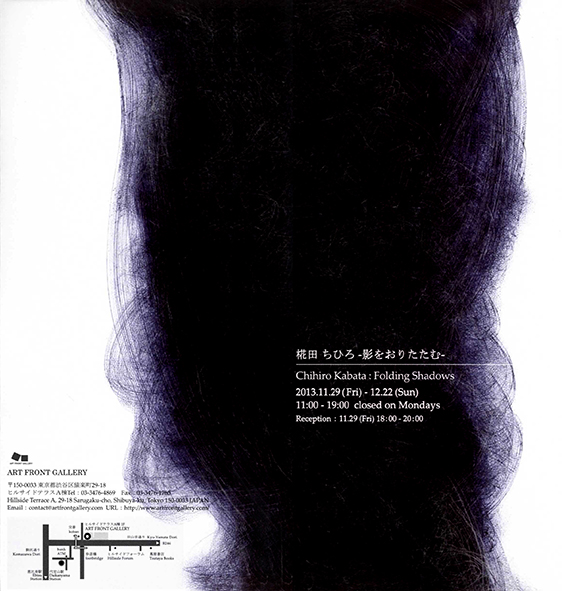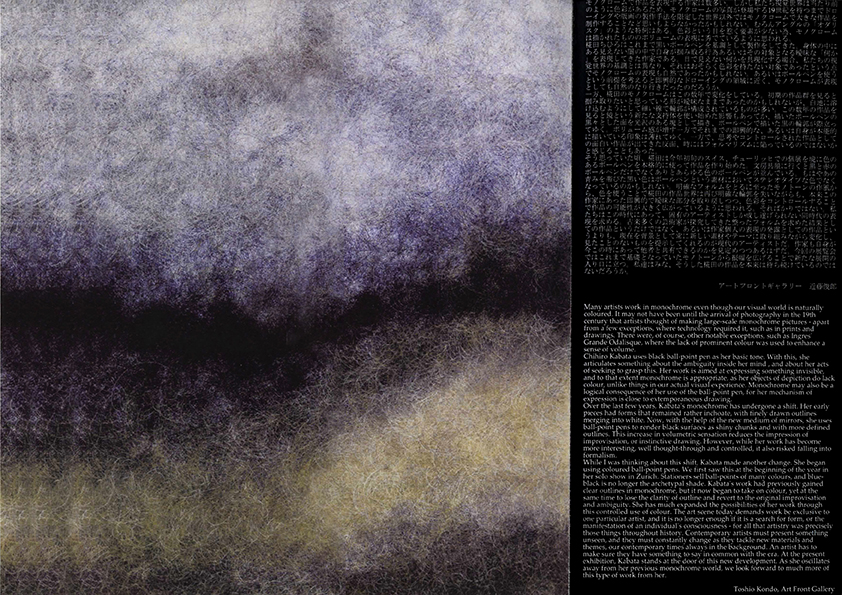Many artists work in monochrome even though our visual world is naturally coloured. It may not have been until the arrival of photography in the 19th century that artists thought of making large-scale monochrome pictures – apart from a few exceptions, where technology required it, such as in prints and drawings. There were, of course, other notable exceptions, such as Ingres’ Grande Odalisque, where the lack of prominent colour was used to enhance a sense of volume.
Chihiro Kabata uses black ball-point pen as her basic tone. With this, she articulates something about the ambiguity inside her mind , and about her acts of seeking to grasp this. Her work is aimed at expressing something invisible, and to that extent monochrome is appropriate, as her objects of depiction do lack colour, unlike things in our actual visual experience. Monochrome may also be a logical consequence of her use of the ball-point pen, for her mechanism of expression is close to extemporaneous drawing.
Over the last few years, Kabata’s monochrome has undergone a shift. Her early pieces had forms that remained rather inchoate, with finely drawn outlines merging into white. Now, with the help of the new medium of mirrors, she uses ball-point pens to render black surfaces as shiny chunks and with more defined outlines. This increase in volumetric sensation reduces the impression of improvisation, or instinctive drawing. However, while her work has become more interesting, well thought-through and controlled, it also risked falling into formalism.
While I was thinking about this shift, Kabata made another change. She began using coloured ball-point pens. We first saw this at the beginning of the year in her solo show in Zurich. Stationers sell ball-points of many colours, and blue-black is no longer the archetypal shade. Kabata’s work had previously gained clear outlines in monochrome, but it now began to take on colour, yet at the same time to lose the clarity of outline and revert to the original improvisation and ambiguity. She has much expanded the possibilities of her work through this controlled use of colour. The art scene today demands work be exclusive to one particular artist, and it is no longer enough if it is a search for form, or the manifestation of an individual’s consciousness – for all that artistry was precisely those things throughout history. Contemporary artists must present something unseen, and they must constantly change as they tackle new materials and themes, our contemporary times always in the background. An artist has to make sure they have something to say in common with the era. At the present exhibition, Kabata stands at the door of this new development. As she oscillates away from her previous monochrome world, we look forward to much more of this type of work from her.
Toshio Kondo, Art Front Gallery |

